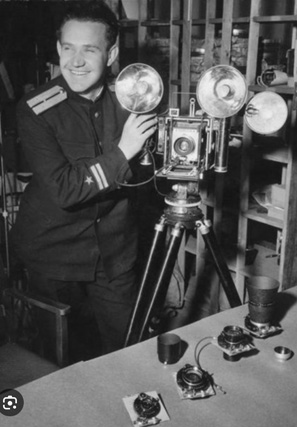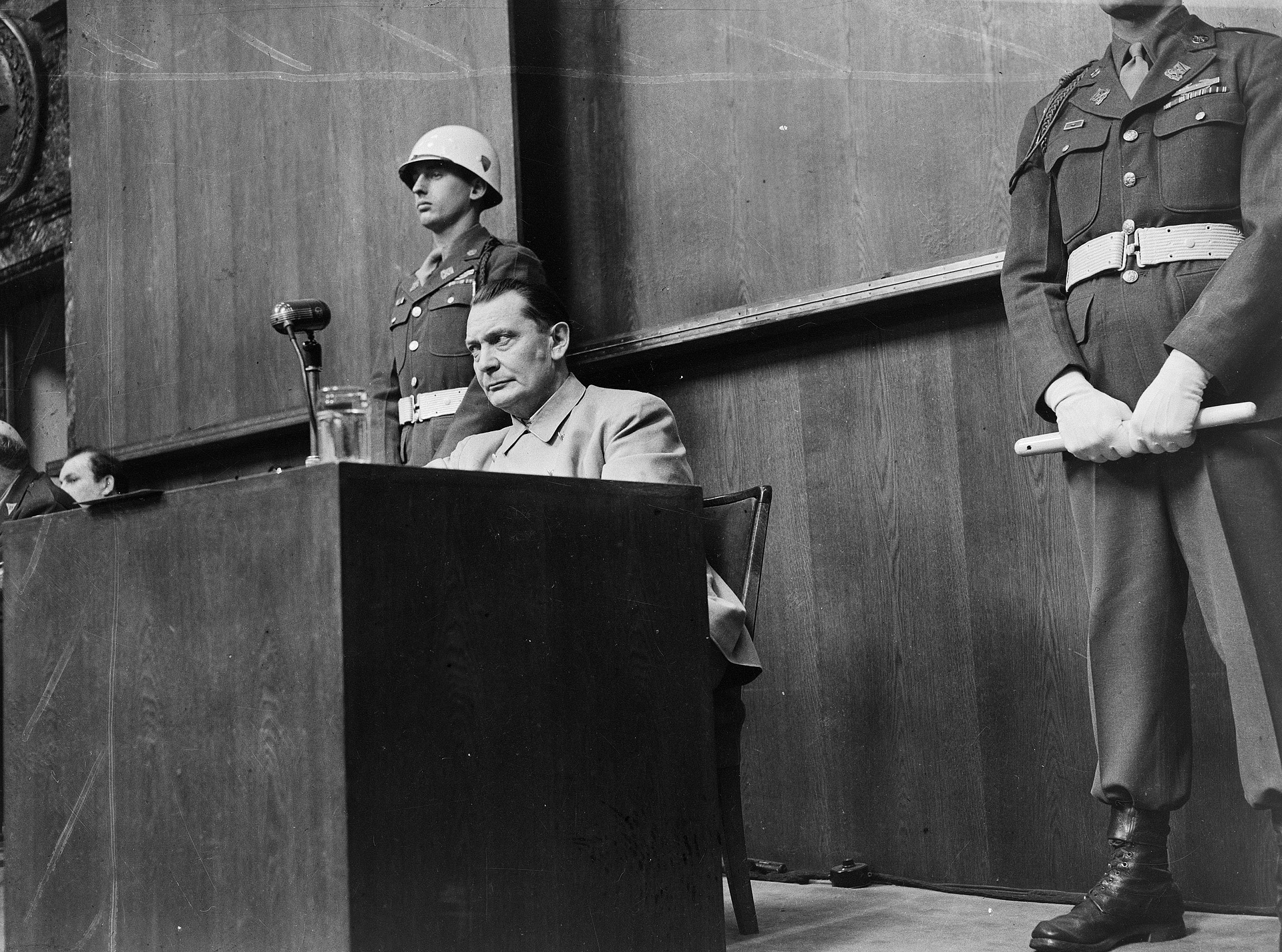«Göring giving testimony»
1946
In 1945, Yevgeny Khaldei was dispatched by the TASS agency to cover the proceedings of the International Military Tribunal in Nuremberg, becoming the sole Soviet photographer to document this historic event. During the trial, three of his wartime photographs – the chimneys of Murmansk, the devastated Sevastopol, and the ruined Novorossiysk – were presented as evidence of Nazi atrocities. Khaldei used an American made SPEED GRAPHIC camera, a gift from the renowned Hungarian-American photographer Robert Capa, to capture the moments of the trial.

Each photo correspondent was assigned a specific section of the courtroom, and moving about during the proceedings was forbidden. From that spot, mostly wide-angle shots could be taken, even when employing long-focus lenses. Nevertheless, each photographer aimed to secure their own distinct images.
On day __ of the trial, Khaldei identified a spot from which he could capture an exceptional shot of Hermann Göring, the main defendant at the Nuremberg Trials and one of Adolf Hitler’s closest aides, as he testified from a special podium. Unfortunately, that spot was occupied by an assistant to the secretary of the Soviet military prosecutor, who had no intention of relinquishing it for a photo opportunity. The coveted seat only became available during the lunch break that day.
Khaldei approached the lawyer in the chair and innocently asked if he could remain seated a bit longer during lunch. The lawyer, not easily fooled, inquired as to what he would receive in return. “Two bottles of whiskey,” Khaldei eagerly promised. Seizing the moment during the lunch break, he occupied the desired spot ahead of time and concealed his camera beneath the table. When Göring began his testimony, Khaldei captured the now-iconic photograph from an awkward position and low angle. This photograph has since become one of the most recognized images from the trials, symbolising the end of the Nazi regime and the accountability brought upon its leaders.

